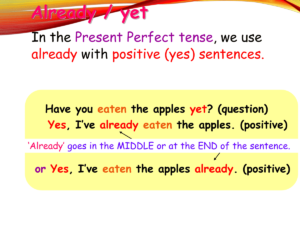Back to: English Language Primary 3
Welcome to class!
In today’s class, we shall be talking about using past continuous tense and present perfect tense with -ed and -en Endings. This topic delves into two important verb tenses and their various forms.
Using Past Continuous Tense. Present perfect using- ed and – en ending
Imagine we’re time travelers, navigating the past and present with language! ⏳🗣️ Today, we’ll focus on two essential verb tenses: past continuous and present perfect. Just as time travelers adapt to different eras, you’ll learn to use these tenses effectively in various situations. Ready to become linguistic time travelers? Let’s start this temporal journey!
Past Continuous Tense:

This tense is used to describe actions that were in progress at a specific point in the past. For example:
“He was going to school when he fell.”
“She was coming to the house when she met John.”
“Joe was eating when he arrived”
Present Perfect with -ed Ending:

This form of the present perfect tense is used when an action is completed and its exact time is not specified. For example:
“I have cleaned the kitchen.”
“She has painted the walls.”
“He has cut the grass”
Present Perfect with -en Ending:

This form of the present perfect tense is also used for completed actions but often involves verbs that end in -en or irregular past participles. For example:
“John has stolen a pencil.”
“I have eaten my food.”
” Kemi has beaten the dog”
I want you to create sentences using these tenses to describe various actions or events.
In today’s class, we explored two important verb tenses.
Past Continuous Tense: This tense is used to describe actions that were in progress at a specific point in the past, providing a sense of continuity to the narrative.
Present Perfect Tense with -ed and -en Endings: These forms of the present perfect tense are used to describe completed actions, with the -ed ending for regular verbs and the -en ending for irregular or certain past participles.
Evaluation and Questions:
Why are past continuous and present perfect tenses important in storytelling and communication? Can you think of a personal experience you can describe using one of these tenses?
Weekend Assignment:
Over the weekend, challenge yourself to write a short story or describe an event using both past continuous and present perfect tenses. It’s like crafting a time-traveling narrative!
We have come to the end of today’s class. I hope you enjoyed the class!
In the next class, we shall be discussing Present perfect with “since” and “for” Present perfect with “since.”
In case you require further assistance or have any questions, feel free to ask in the comment section below, and trust us to respond as soon as possible. Cheers!
